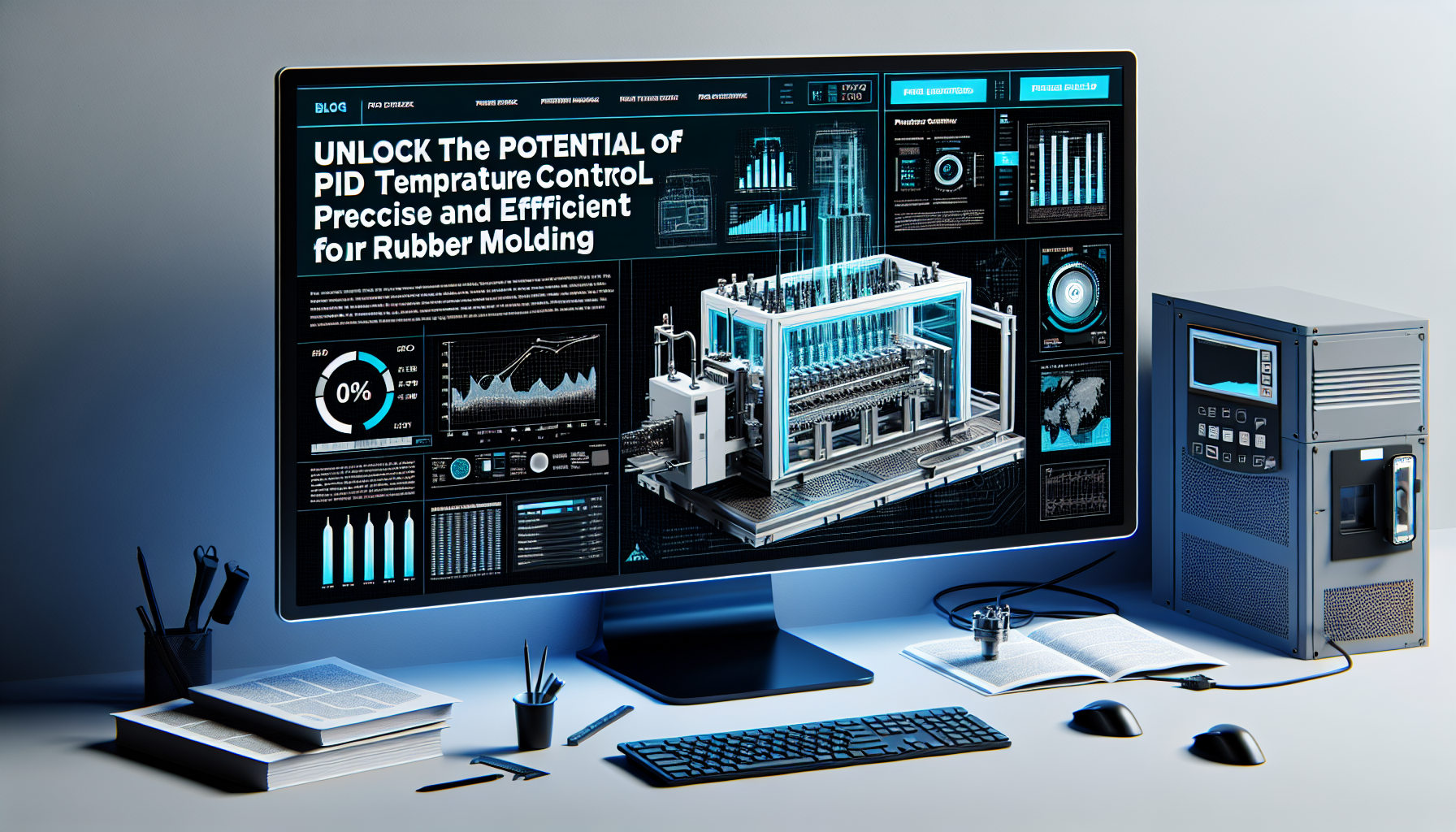Unlocking the Potential of PID Temperature Control for Precise and Efficient Rubber Molding
Temperature control plays a critical role in rubber molding processes, ensuring consistent product quality and properties. PID (Proportional-Integral-Derivative) temperature control offers a precise, efficient approach to maintaining optimal molding conditions. Microquick Engineers has developed a vacuum compression molding machine equipped with PID temperature control features, enhancing the precision and efficiency of rubber part production.
Basics of PID Temperature Control
Proportional-Integral-Derivative (PID) temperature control is a vital feature in Microquick Engineers’ vacuum compression molding machine, significantly improving the precision and efficiency of rubber parts production. This control system regulates the temperature of both heating platens using a PID controller, allowing users to set the temperature of heaters for upper and lower heating platens as required. Real-time temperature values are displayed in an adjacent column, providing accurate feedback for optimal control.
The PID temperature control system measures temperature at two zones of the heating platen, ensuring precise temperature regulation for both the upper and lower heating platens. The system consists of three main components:
- Proportional (P): The P component produces an output proportional to the current error (the difference between the desired setpoint and the actual temperature). In simple terms, if the temperature is far from the setpoint, the P component will respond strongly to bring it back.
- Integral (I): The I component considers the accumulation of past errors over time, designed to eliminate any remaining offset between the setpoint and the actual temperature. It is helpful in situations where the proportional component alone may not bring the system to the desired temperature.
- Derivative (D): The D component anticipates future errors by looking at the rate of change of the error, preventing overshooting by damping the response when the temperature is approaching the setpoint rapidly.
The PID controller’s output is calculated by combining these three components:
Output = Kp × Proportional + Ki × Integral + Kd × Derivative
where Kp, Ki, and Kd are the proportional, integral, and derivative gains, respectively. Proper tuning ensures stable and responsive temperature control, minimizing overshooting and oscillations. To see the machine in action, watch this video: https://youtu.be/R7mNzLSttAU
Implementing PID temperature control in rubber molding offers several advantages, including improved precision and efficiency, consistent product quality, and reduced scrap rates. By maintaining optimal temperature conditions throughout the molding process, manufacturers can unlock the full potential of their rubber molding operations.
Implementing PID Temperature Control in Rubber Molding
Microquick Engineers’ vacuum compression molding machine features advanced PID temperature control, significantly improving the precision and efficiency of rubber part production. The machine regulates the temperature of both heating platens using a proportional-integral-derivative (PID) controller, allowing users to set the temperature of heaters for upper and lower heating platens as required. Real-time temperature values are displayed in an adjacent column, providing accurate feedback for optimal control.
Proper calibration and tuning of PID controllers are essential for achieving stable and responsive temperature control, minimizing overshooting and oscillations. By measuring temperature at two zones of the heating platen, the PID system ensures precise temperature regulation for both the upper and lower heating platens. This allows for temperature uniformity and consistency in rubber molding, contributing to higher product quality and reduced scrap rates.
By implementing PID temperature control in rubber molding processes, manufacturers can unlock the full potential of their operations. The Microquick Engineers vacuum compression molding machine demonstrates the benefits of this advanced control system in action, which can be seen in this video: https://youtu.be/R7mNzLSttAU.
Benefits of PID Temperature Control in Rubber Molding
Implementing PID temperature control in rubber molding processes, such as those used by Microquick Engineers’ vacuum compression molding machine, offers significant benefits for precision and efficiency. The advanced control system brings improvements in various aspects of the molding process, including:
- Improved precision and efficiency: The PID controller’s ability to respond quickly to temperature changes and maintain optimal temperature conditions throughout the molding process leads to increased precision and efficiency in rubber part production.
- Enhanced product quality and consistency: By ensuring temperature uniformity and consistency in the molding process, PID temperature control contributes to higher product quality with consistent properties. This is especially important in industries with strict quality requirements, such as automotive, healthcare, and electrical applications.
- Reduced scrap rates and increased productivity: By minimizing temperature variations and maintaining uniform heating throughout the mold, PID temperature control helps reduce scrap rates and increase overall productivity. This leads to cost savings for manufacturers and enhanced production capabilities.
- Energy-efficient operation: The PID controller’s ability to minimize temperature overshoot and reduce energy consumption results in a more energy-efficient molding process, contributing to lower operating costs and a reduced environmental footprint.
By leveraging the advanced PID temperature control features in Microquick Engineers’ vacuum compression molding machine, manufacturers can unlock the full potential of their rubber molding operations. To see the machine in action, watch this video: https://youtu.be/R7mNzLSttAU.
Microquick Engineers’ Vacuum Compression Molding Machine in Action
The importance of temperature control for high-quality rubber products cannot be overstated. Microquick Engineers’ vacuum compression molding machine showcases the use of PID temperature control in rubber molding, effectively demonstrating the machine’s capabilities in achieving precise and efficient rubber molding.
With advanced PID temperature control features, the machine regulates the temperature of both heating platens using a proportional-integral-derivative (PID) controller. This allows users to set the temperature of heaters for upper and lower heating platens as required. The real-time temperature values are displayed in an adjacent column, providing accurate feedback for optimal control.
The PID temperature control system measures temperature at two zones of the heating platen, ensuring precise temperature regulation for both the upper and lower heating platens. Proper tuning of the PID controller ensures stable and responsive temperature control, minimizing overshooting and oscillations. This ultimately results in improved precision and efficiency of rubber parts production.
To see the machine in action, you can watch this video: https://youtu.be/R7mNzLSttAU. The video offers a clear demonstration of the machine’s capabilities and the benefits of PID temperature control in rubber molding processes. By incorporating this advanced control system, manufacturers can unlock the full potential of their rubber molding operations, resulting in consistently high-quality products.
Discover Precision in Rubber Molding
PID temperature control unlocks the potential for precise and efficient rubber molding, as demonstrated by Microquick Engineers’ vacuum compression molding machine. This advanced control system not only improves precision and efficiency in rubber part production but also enhances product quality and consistency, reduces scrap rates, and increases energy efficiency. By incorporating PID temperature control, manufacturers can elevate their rubber molding operations and achieve consistently high-quality products.
If you’re looking to explore the technical features of Microquick Engineers’ vacuum compression molding machine, don’t hesitate to visit their website and download the product brochure for more information.


